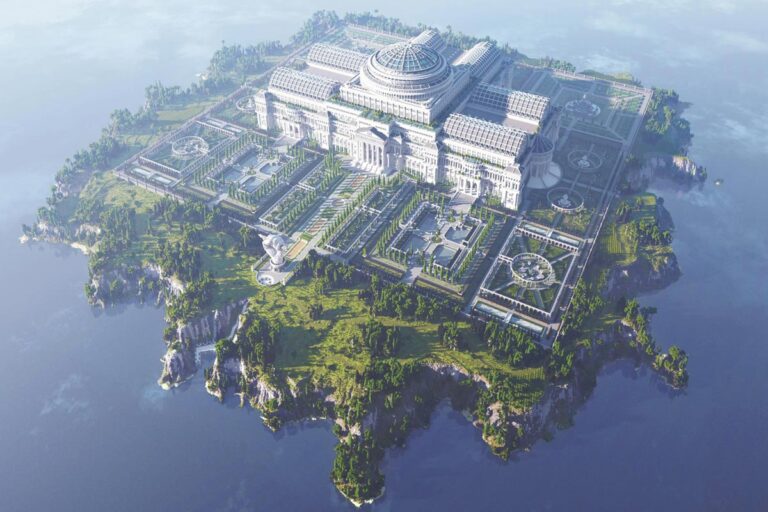People are using Minecraft to share banned journalism in oppressive countries

Ah, Minecraft—nothing is more nostalgia-inducing than taking those first steps on the pixelated grass-blocks, hearing the unmissable low-res crunch feet, desperately trying to find wood for shelter. The game—which, at its core, can be described as digital LEGO—is creative, I’ll give it that. But in all the hours of my teenage years I lost to that digital world, I never considered it to be a mechanism in providing freedom to the press.
Fast-forward a decade and I’m seeing the game in a completely different light. Knowledge is power: freedom of the press is the foundation of a free society. It’s the reason why oppressive governments block access to independent journalism—a tactic that is, unfortunately, happening at an ever-increasing rate. However, while critical voices and international news sites may be shut off from those living under oppressive rule, Minecraft remains untouched—freely accessible because it’s just a game, right?
Think again. Introducing The Uncensored Library: a virtual library in Minecraft, created by Reporters without Borders (RSF) with the assistance of the creative advertising agency DDB, which features a plethora of blacklisted articles that can be read in their original language or in English—an ambitious project built from a staggering 12.5 million blocks, a product of 24 builders from 16 countries. RSF and DDB collaborated with design studio blockworks to build the library, which is informed by the design of the New York Public Library.
Restoring press freedom: block by block
The team decided to locate the virtual library inside the Minecraft world using blockchain cloud storage, which ultimately adds to the world’s security, preventing governments from surveilling its content. The real power in this model, which makes it impossible to compromise and truly delete the contents within the virtual library, is within the sheer number of users who are involved with the project.
Excuse the cliché but there truly is power in numbers—and this project is a living embodiment of that. “Once downloaded each map can be uploaded again, allowing the library to multiply. So far there are more than 200,000 copies—this makes it impossible to take the library down even for Reporters without Borders themselves,” senior art director at DDB Germany, Sandro Heireli, told Dezeen.
Once downloaded, the large quantity of forbidden 100-page in-game books can be read by anyone with Minecraft installed on their computer. This ease of use and accessibility, along with the game’s popularity among young people was an important factor in developing the library. It’s become a welcoming form of escapism for the youth living under oppressive governments, as Heireli further explained to Dezeen. “In oppressive countries that increasingly restrict the rights of their citizens, young people especially tend to flee into games such as Minecraft that still provide freedom in virtual worlds.” He continued, “The target was to reach gamers aged between 15 and 30 years old, especially in countries with online censorship, to get them engaged with independent journalism.”
Knowledge is power: especially under the oppressive rule
The articles written into the virtual of books were selected through a number of criteria. Countries with a high score in the RSF’s World Press Freedom Index—in other words, countries which have limited freedom for journalists—were measured against those with high Minecraft usage, collected through Google data. The articles were then selected on a basis of sharing content that would resonate with the most people, while also lifting up those under the most oppressive governments. Designers also installed a plug-in into the game which allows players to automatically convert the in-game books into Word documents.
When launched in March 2020, the library contained specific rooms for banned articles in Egypt, Russia, Saudi Arabia, Mexico and Vietnam. Belarus and Brazil were added a year later. As well as the protection of its users, the team ensured the projection of the journalists featured in the library. Most of the writers, such as Javier Valdez—an award-winning journalist famous for his reporting on drug trafficking and organised crime in Mexico—have either passed away, are living in exile or remain anonymous. Those who are still vulnerable are in “close contact with RSF” to “ensure everyone’s safety,” Heirli noted.





